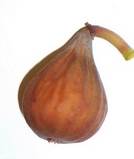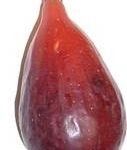 The end of summer is the perfect time to start thinking of adding to your orchard, and one fruit tree prized as a dooryard standard are fig trees. Fig (botanical name Ficus carica) are considered a classical fruit, a prized sweet-tasting commodity celebrated from ancient western Asia to Mediterranean civilizations. Figs were imported to California from Spain in the mid eighteenth century, making their way across the southern United States with expansion. In general, fig trees are not cold tolerant, limited to regions with mild winters well above minimum 10-degree temperatures. Historically, our subtropical region was a major fig producer during the turn of the 20th century. Canneries could be found in Brazoria and Galveston County towns such as Alvin, Angleton, Pearland, Alcoa, Friendswood, San Leon, Winnie and La Porte with between 17,000 to 18,000 acres under cultivation by the early 1920s. Fig production declined shortly after World War II, with regional commercial production ceasing soon after.
The end of summer is the perfect time to start thinking of adding to your orchard, and one fruit tree prized as a dooryard standard are fig trees. Fig (botanical name Ficus carica) are considered a classical fruit, a prized sweet-tasting commodity celebrated from ancient western Asia to Mediterranean civilizations. Figs were imported to California from Spain in the mid eighteenth century, making their way across the southern United States with expansion. In general, fig trees are not cold tolerant, limited to regions with mild winters well above minimum 10-degree temperatures. Historically, our subtropical region was a major fig producer during the turn of the 20th century. Canneries could be found in Brazoria and Galveston County towns such as Alvin, Angleton, Pearland, Alcoa, Friendswood, San Leon, Winnie and La Porte with between 17,000 to 18,000 acres under cultivation by the early 1920s. Fig production declined shortly after World War II, with regional commercial production ceasing soon after.
With a little preparation, figs can be grown quite successfully in the home landscape. While it is recommend planting trees in well-drained soil, keep in mind that fig trees have fibrous, shallow root systems and must be protected from water loss, winter temperature fluctuation and soil compaction with an adequate mulch layer. Fig trees can get quite large and are often grown as spreading, multi-trunk specimens. Space them in your orchard at minimum 12-feet apart. The best plan is to locate them with full sun exposure in an area of your yard that can accommodate expansion.
Fruit production may begin when an established tree reaches 2 years old. There are four fruiting types that include Caprifig, San Pedro and Smyrna, and the one most successfully grown in our region is called Common. Common type fruits develop without pollination (parthenocarpic). The fruit is an enlarged, fleshy hollow stem tissue enclosing masses of tiny flowers and not seeds. Fruit harvest can occur from early through late summer in our region. Keep in mind that the fig must be harvested when ripe and will not continue to ripen once picked, prompting preservation via canning or drying with a bountiful harvest.
Characteristics to consider when choosing a fig tree are varieties producing fruit with a closed, or nearly closed eye. The eye is a small opening located at the bottom of the fruiting structure. Open eye varieties may be susceptible to insect infestation such as the dried fruit beetle and fungal pathogens.
While there is not enough room in this article to list a wide variety of fig trees, I will address some that will work for you. ‘Brown Turkey’ and ‘Texas Everbearing’ are two varieties that produce well, and the two are often confused with one another. ‘Brown Turkey’ is a common home-grown variety and can provide up to two harvests in a year (late May-June, and September – November), producing a small to medium fruit with a nearly closed eye, violet brown skin and sweet red-amber colored pulp. ‘Texas Everbearing’ can also produce two annual crops of medium to large-sized figs with a moderately closed eye, succulent brown-purple fruit with deep burgundy pulp, ideal for canning or eating fresh.
‘LSU Purple produces a medium-sized green to dark-purple skin with strawberry colored pulp that is mild and sweet-flavored. The fruit has a closed eye and is reported to be relatively cold hardy and widely adapted across the Gulf Coast. For the adventurous, you may try ‘Blue Giant’, a fig a little larger than the size of a golf ball with purple skin, pink and amber pulp and a closed eye. This fig has a mild, sweet flavor when ripened on the tree.
I consider fig nature’s candy, a fruit high in natural sugars, minerals and soluble fiber. Information about fruits and vegetables support the Texas A&M AgriLife Extension Service initiative Path to Plate, a research-based education program that helps consumers understand how food choices impact their health. Thank you for the opportunity to preserve and serve, and I’ll see you in the garden.

